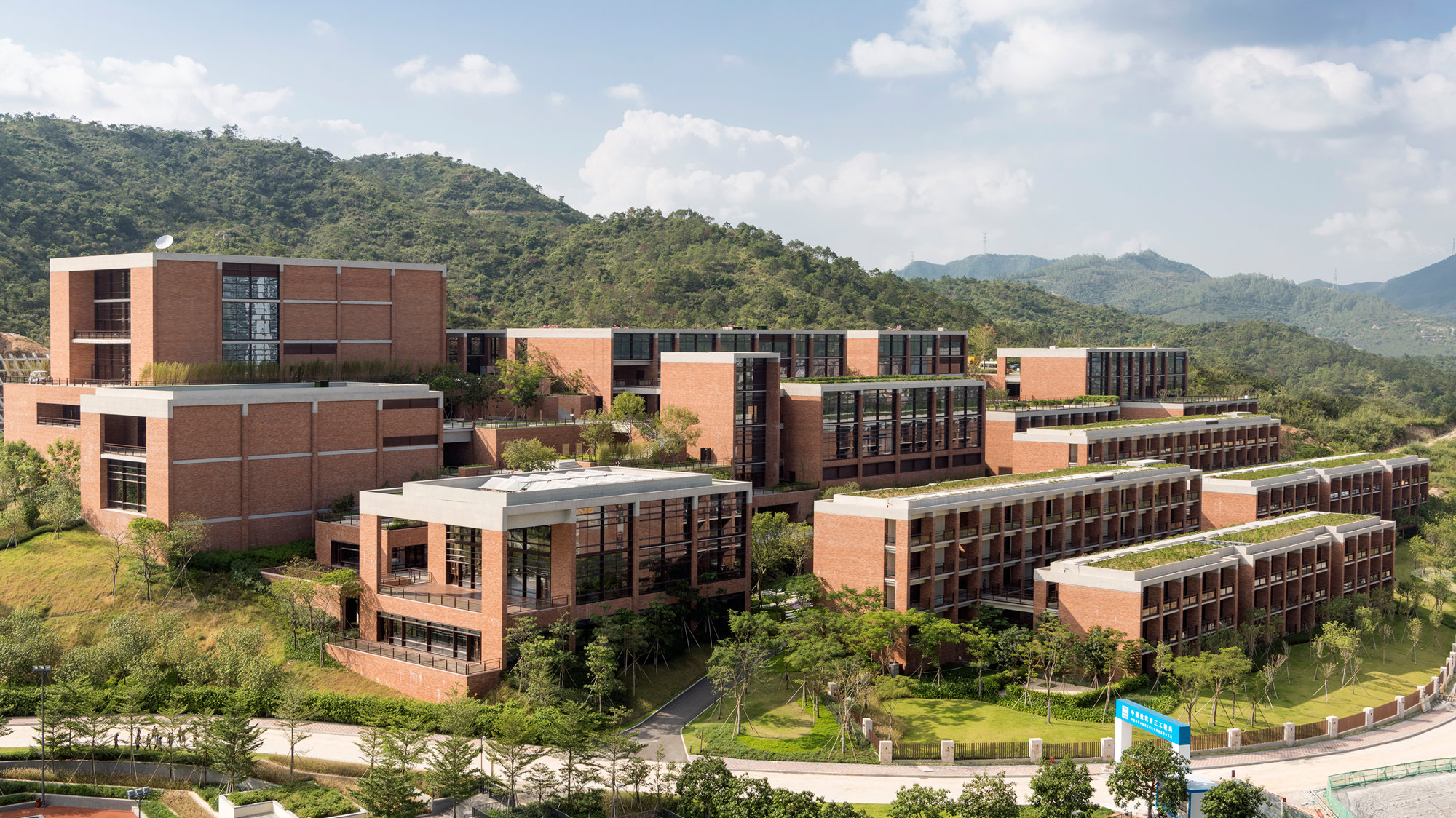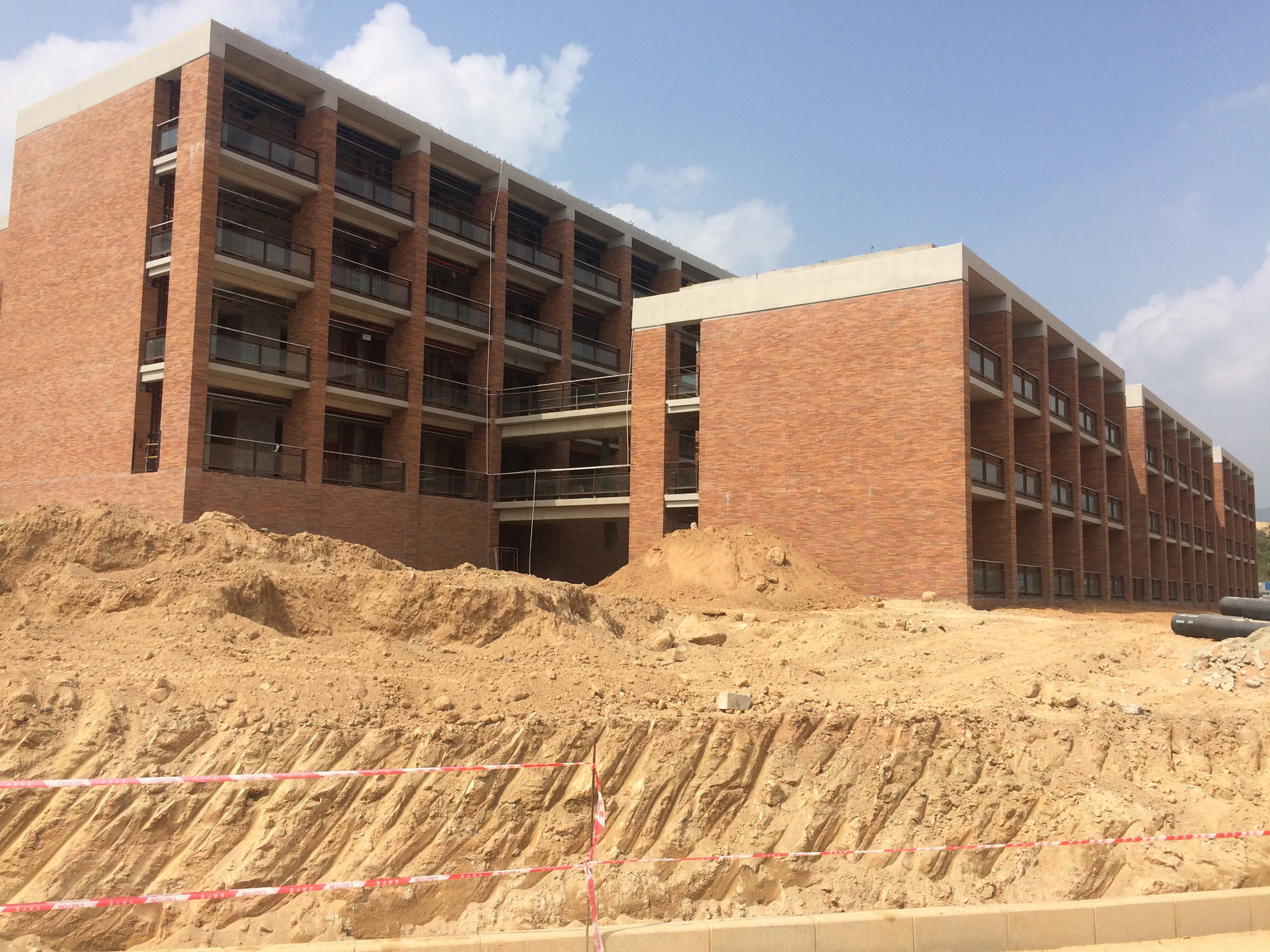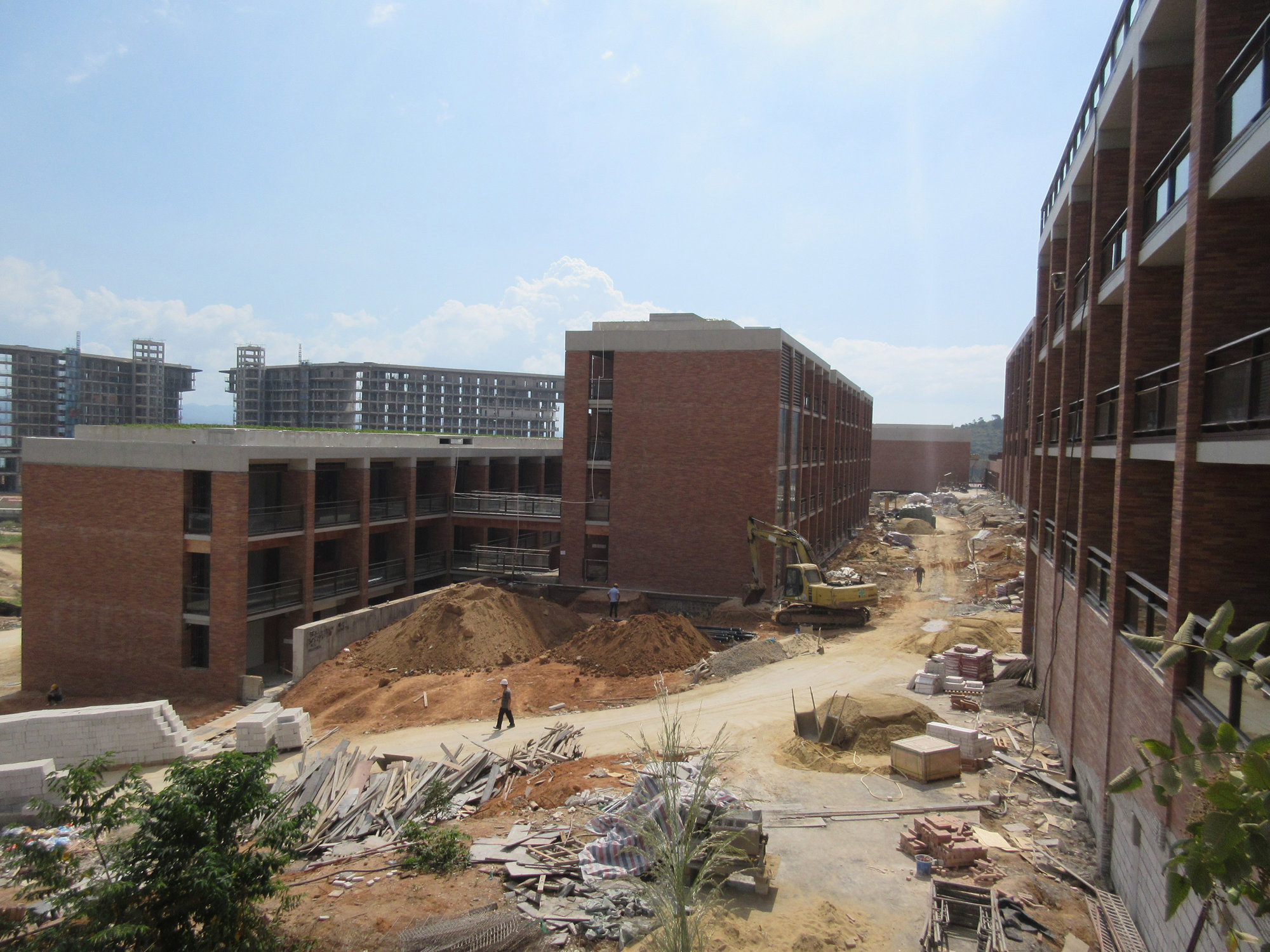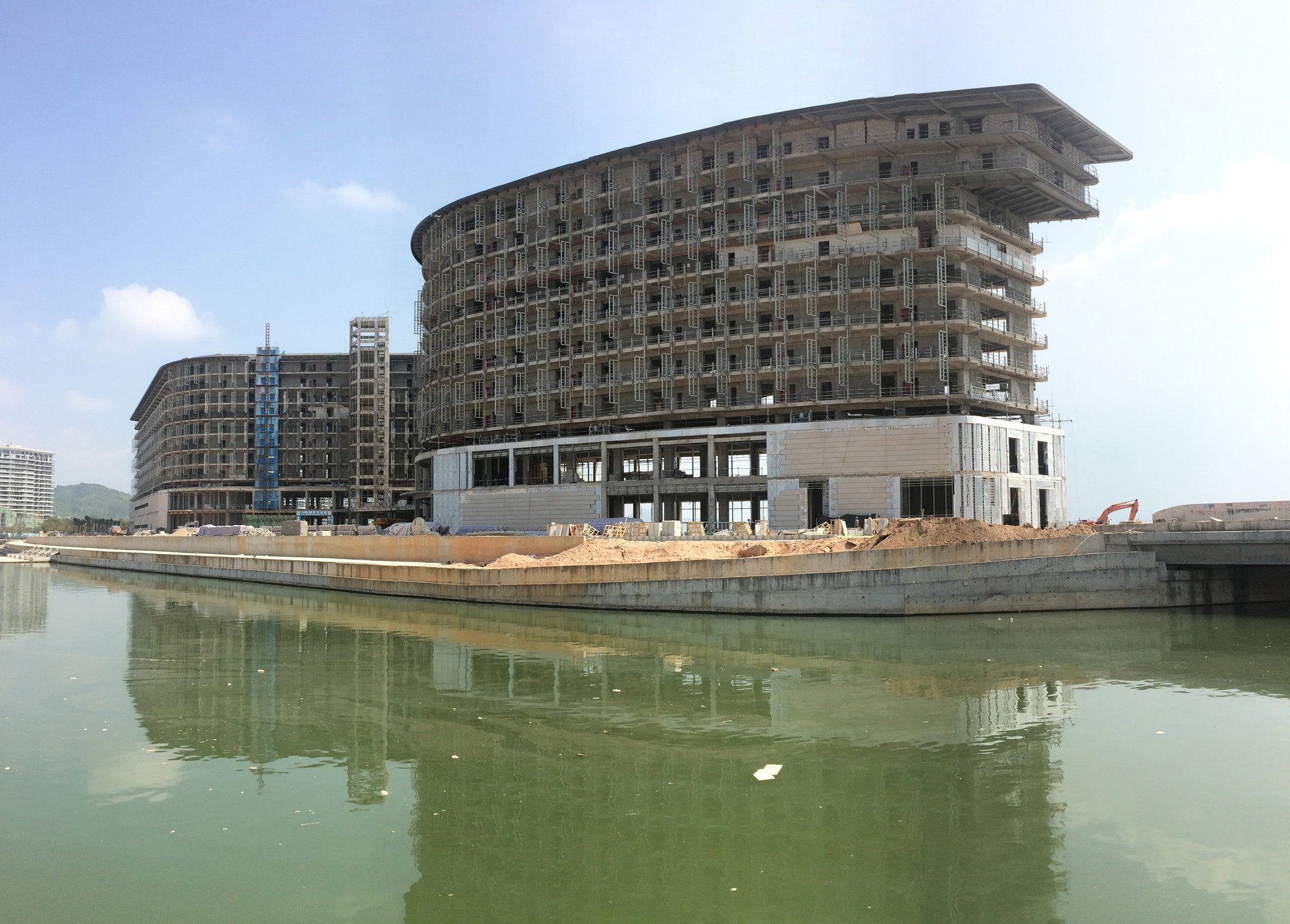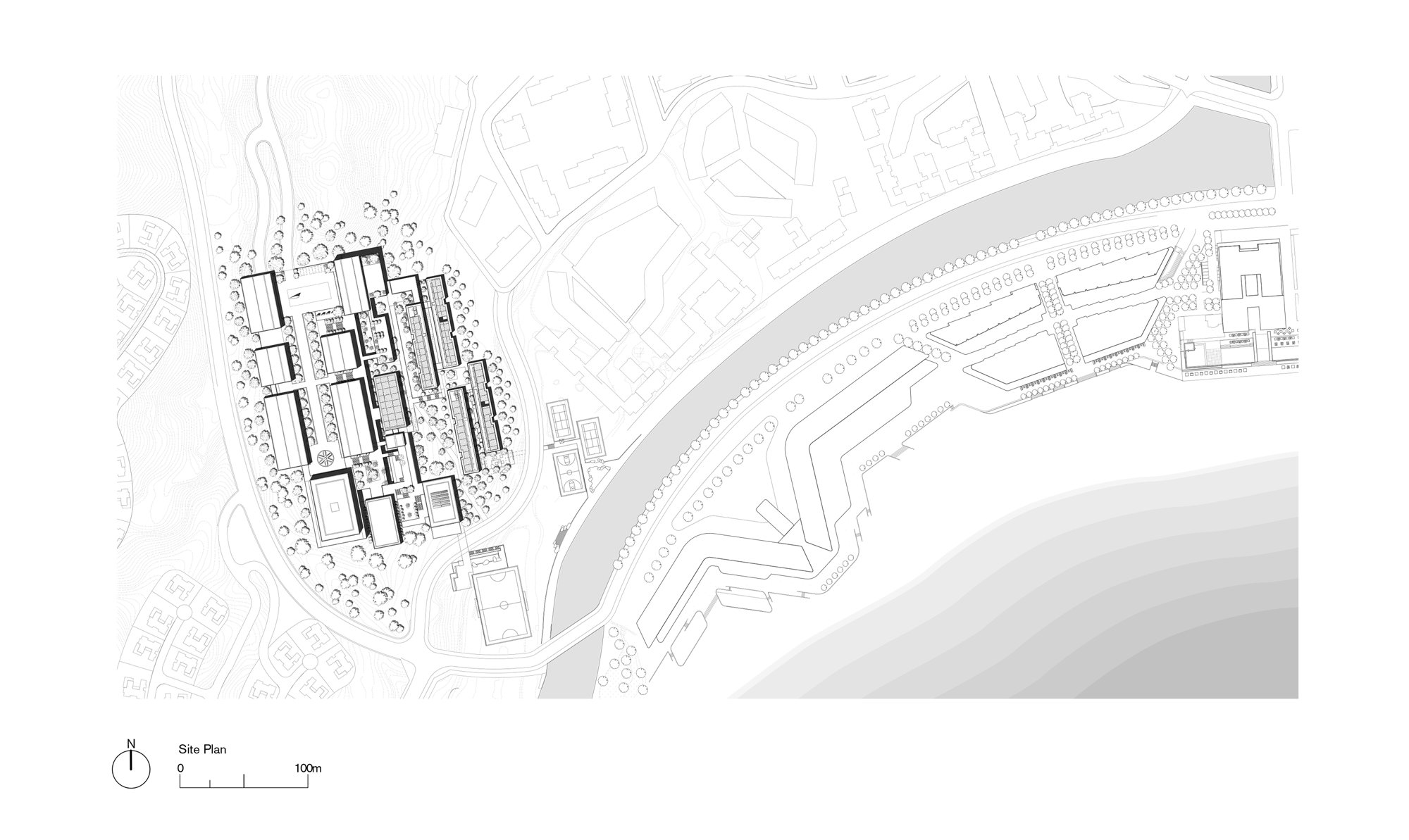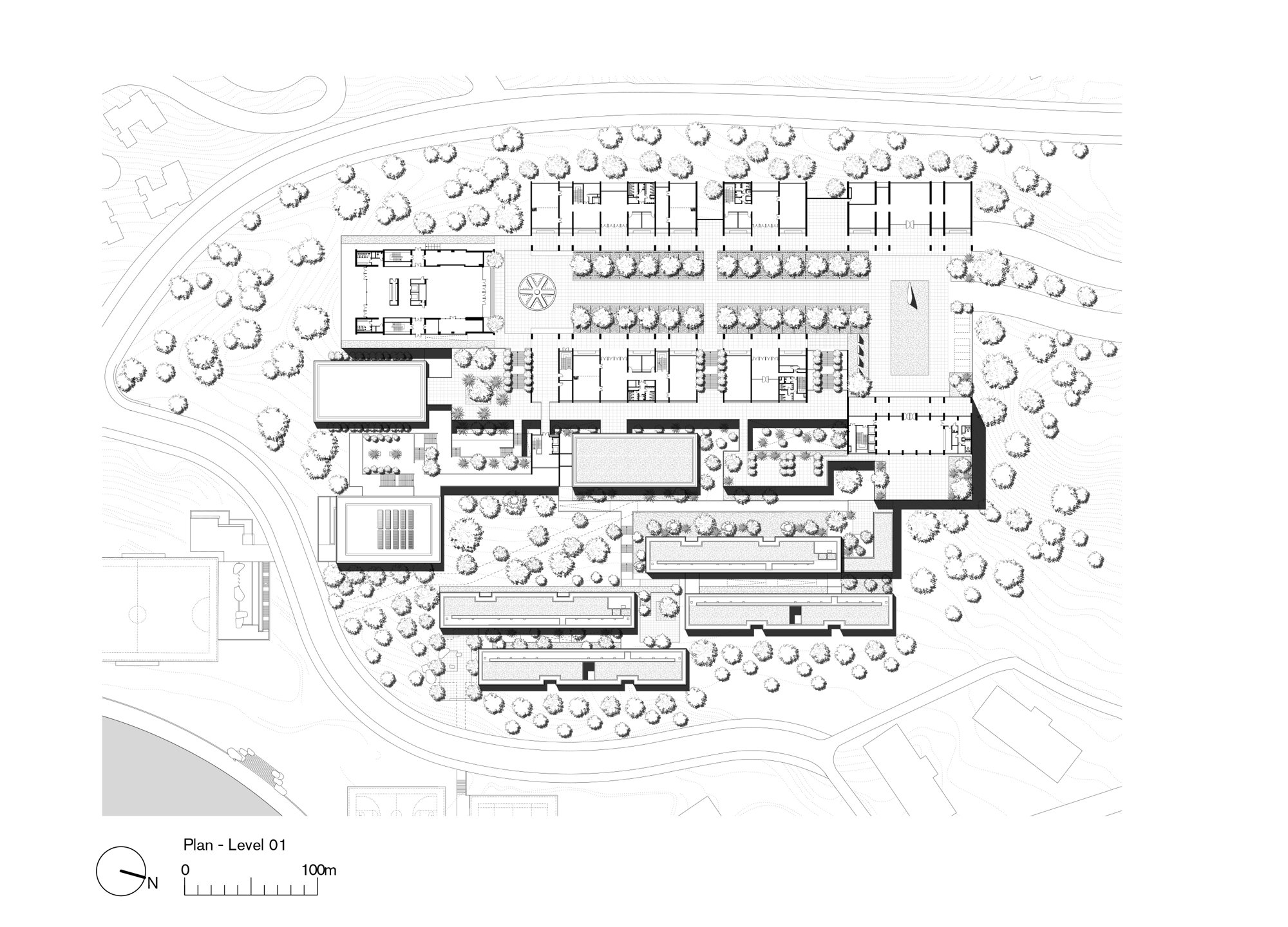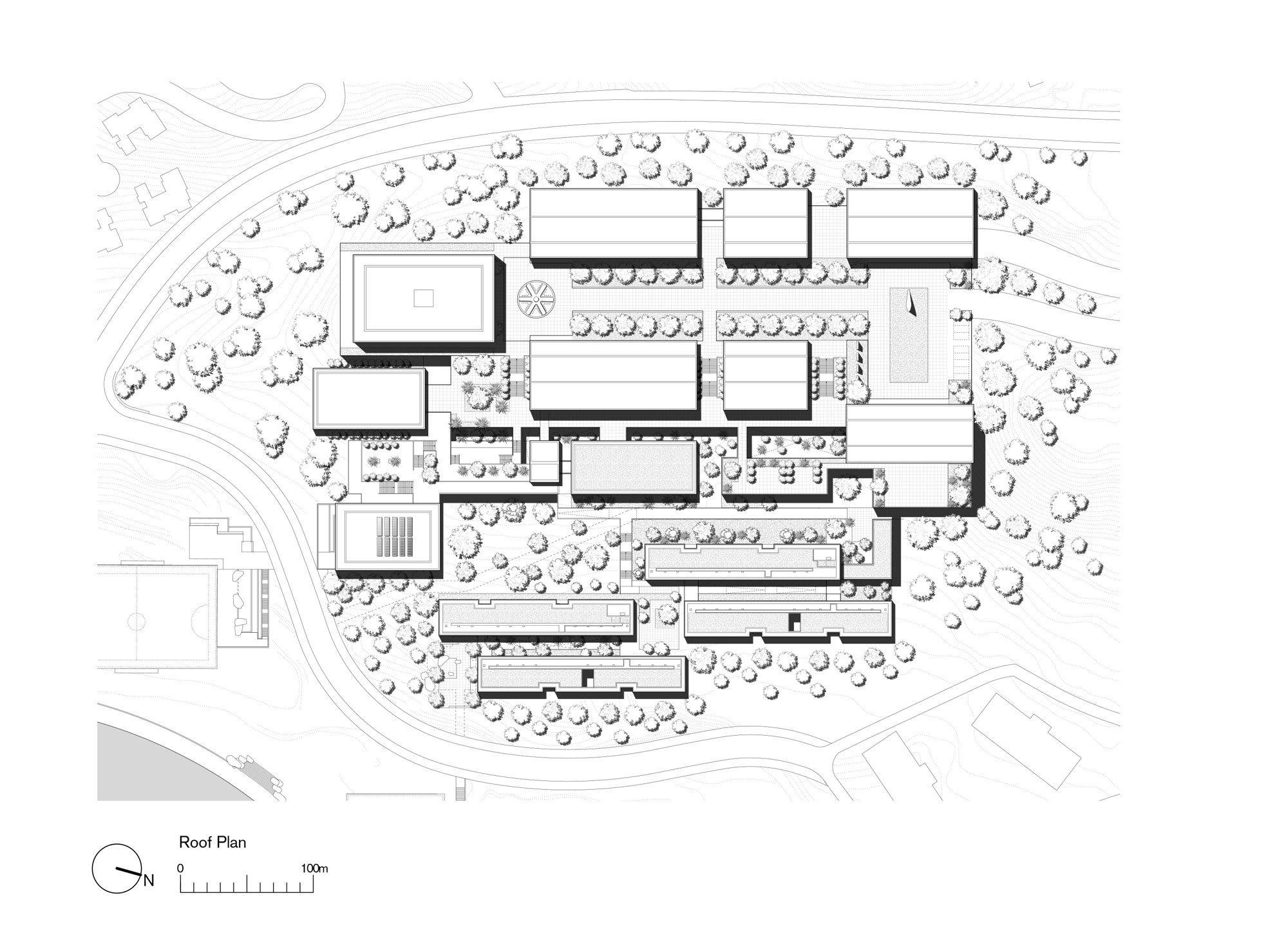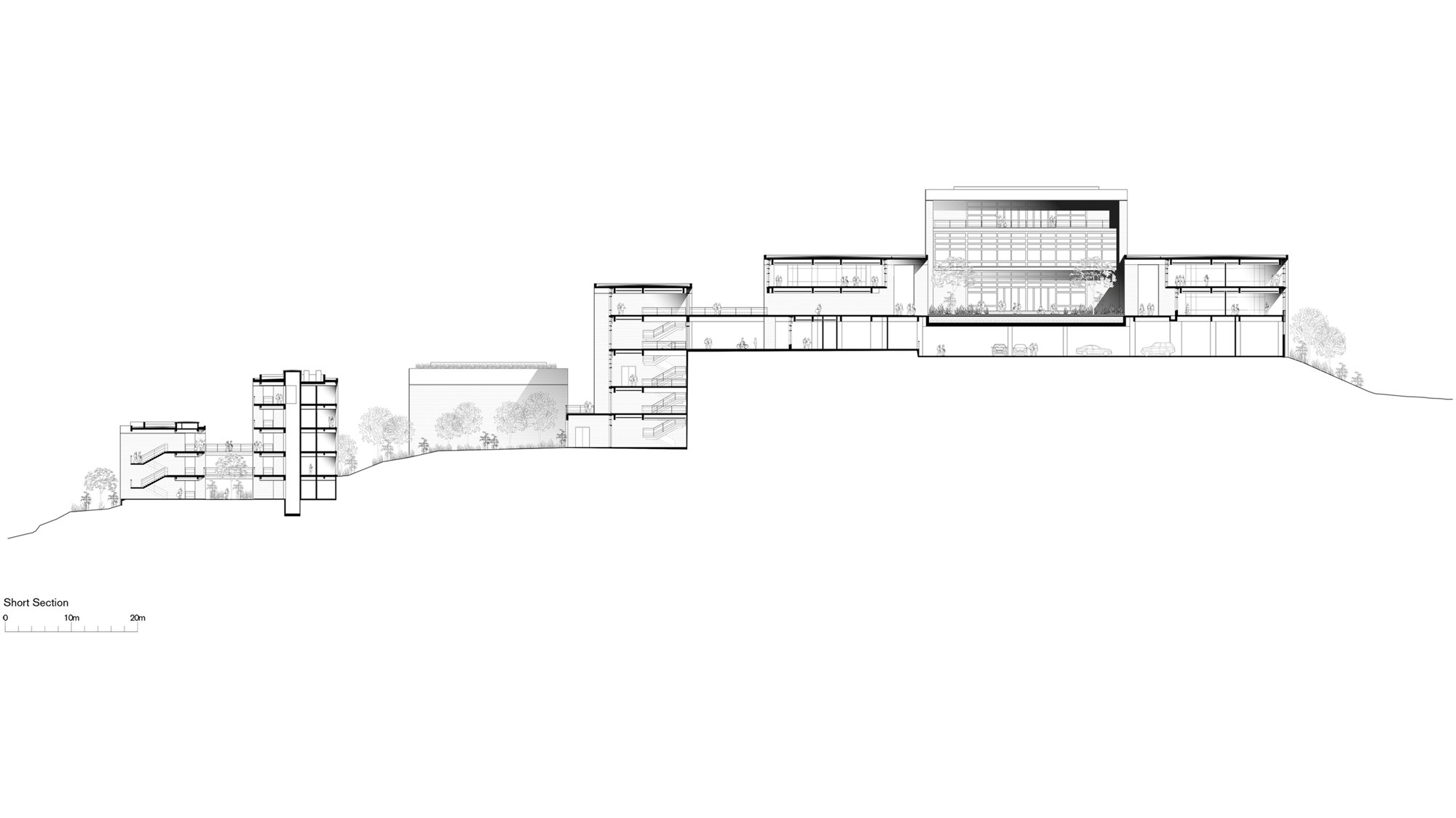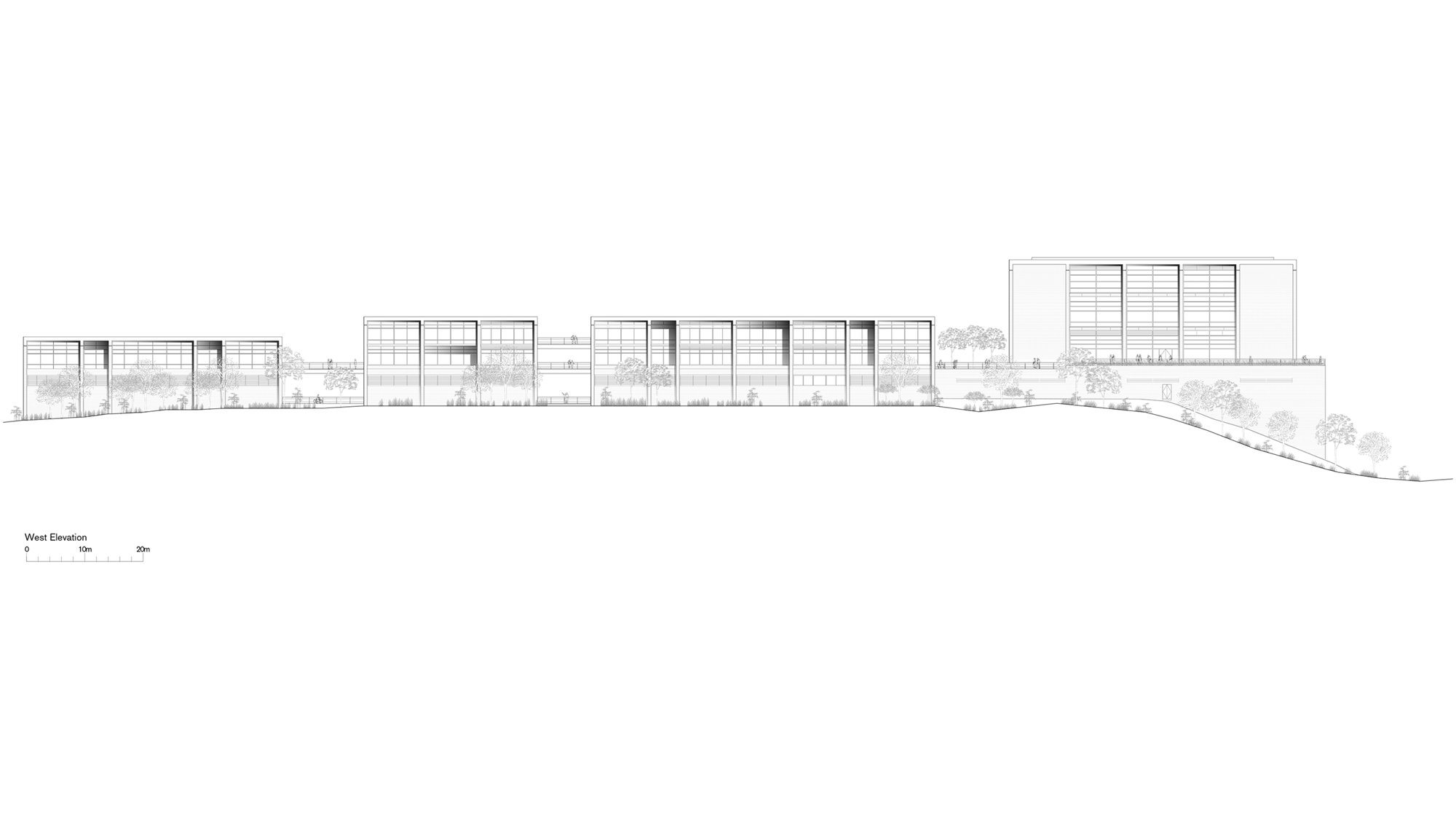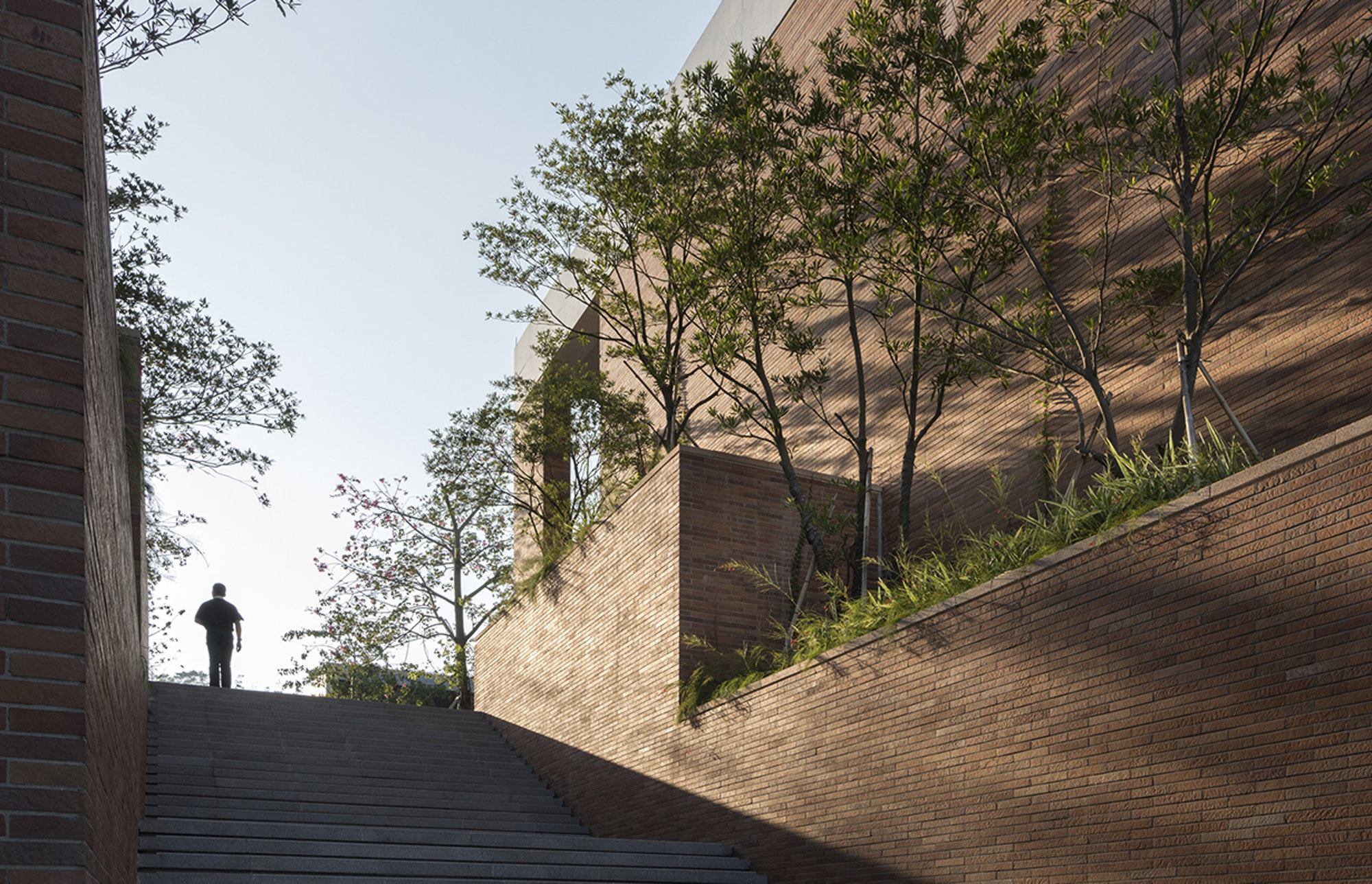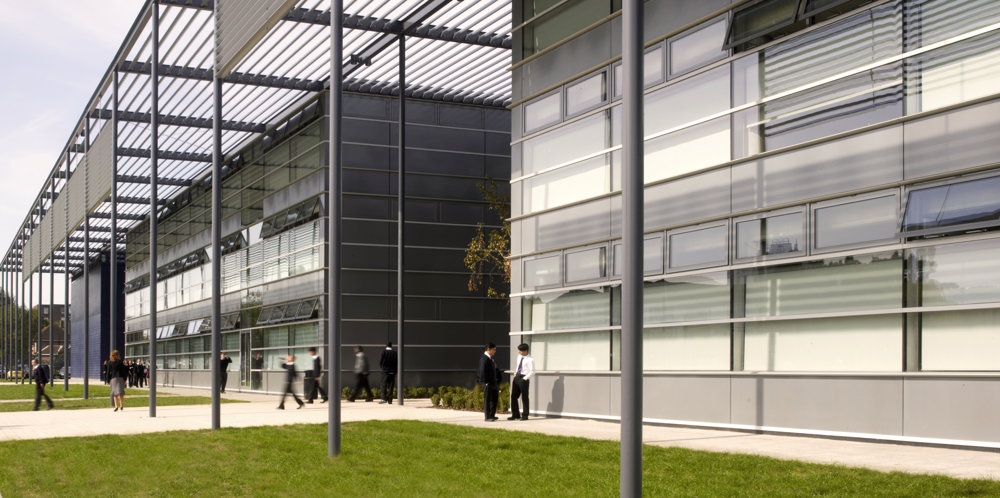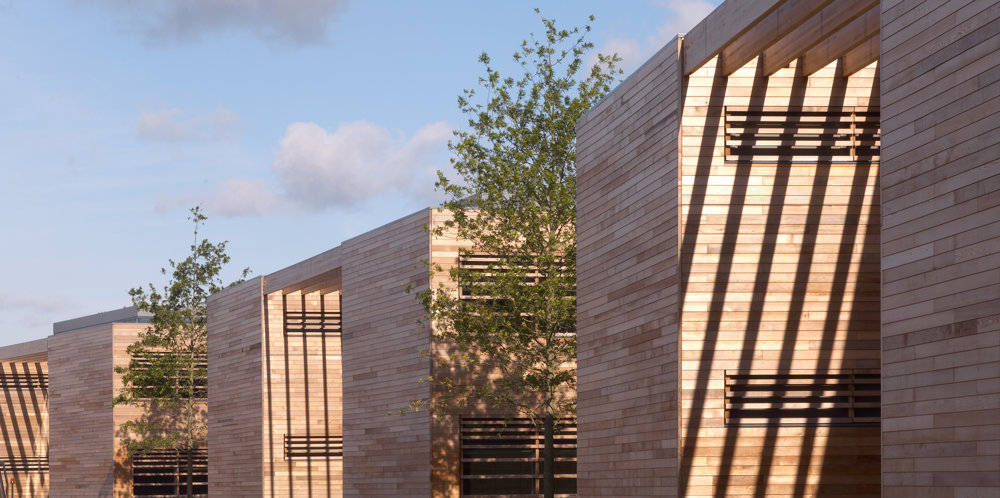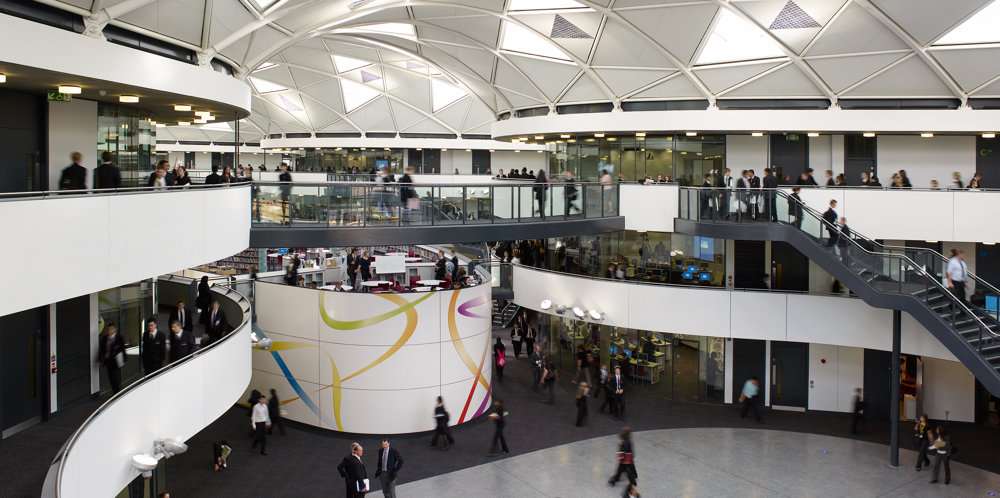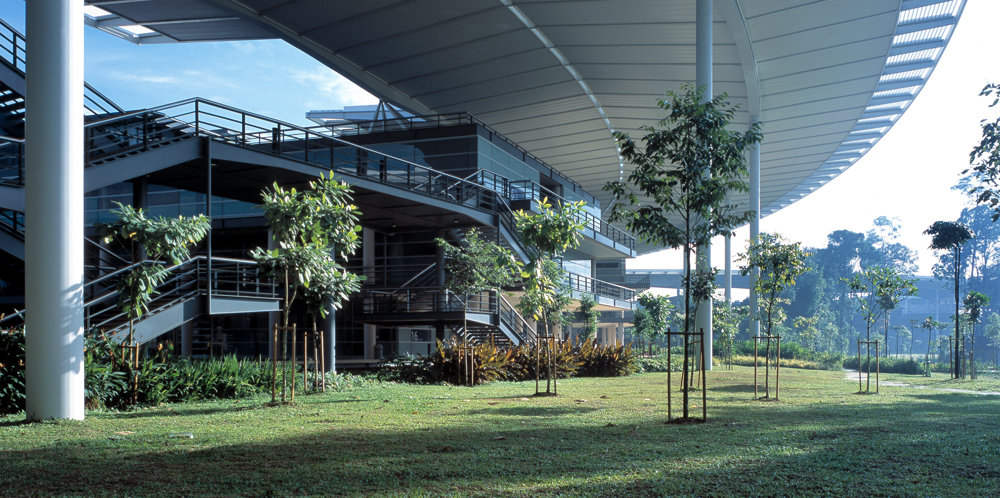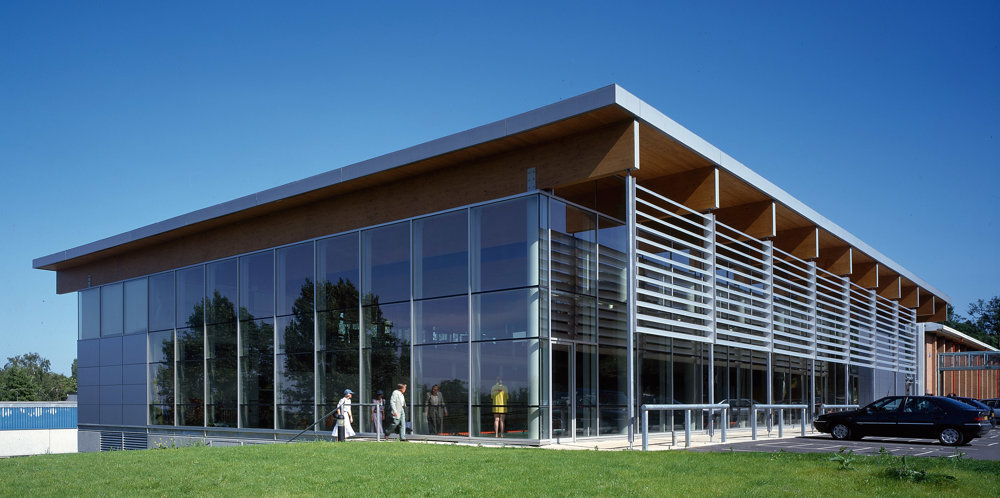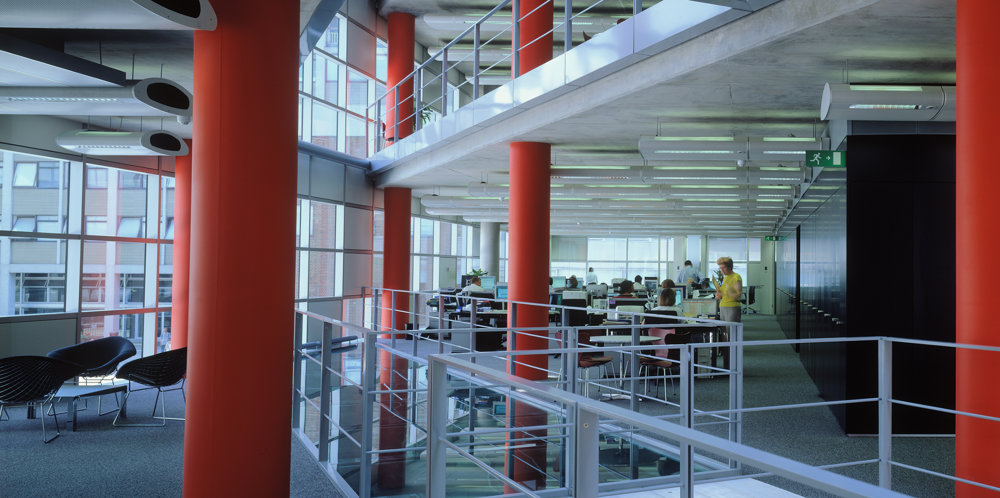Xiao Jing Wan is a coastal urban development located to the east of Shenzhen. Foster + Partners has designed a masterplan for the region that includes a University campus for China Resources. The 55,000 square-metre University is located astride a hill with exceptional views towards the sea. Teaching rooms and an innovation centre flank the central axis, which terminates with a grand building housing the main auditorium and executive meeting rooms. The library, additional auditoria, students’ bar, gym and residences step down the hill, maintaining views, and are linked by lush landscaping. The buildings maintain a strong horizontal emphasis, and utilise a restrained materials palette consisting of fair-faced concrete exposed internally and externally, bronze coloured cladding and a specially designed clay brick.
This area of Shenzhen has a history of brick masonry buildings, and the design of the university buildings follow in this tradition by offering a contemporary interpretation of the conventional building block. To accentuate the horizontality of the buildings, the specially designed brick is more than half a metre long, with a smaller cross-section. Although machine-pressed, the brick is rough-textured giving it a crafted, hand-made quality. The texture comes from pressing rough stones against the bricks by hand before firing them. Each brick is baked at varying temperatures (1250 – 1290 degree Celsius) to obtain a narrow variation in colour shades, which closely match the tones of the earth found in the surrounding area.
Each dimension of the brick is a carefully calibrated figure. Following a general module of 50 millimetres, the 42 millimetre height is overlaid with an 8 millimetre layer of mortar to align the brickwork with other building elements such as doors, windows and staircases. The colour of the mortar also exudes warmth, matching the shade of the fair-faced concrete on the buildings. The result is precise, well-engineered complex of buildings that obtain their character from the basic building block – the brick, simultaneously reflecting the area’s vernacular heritage and the contemporary nature of the university buildings.









